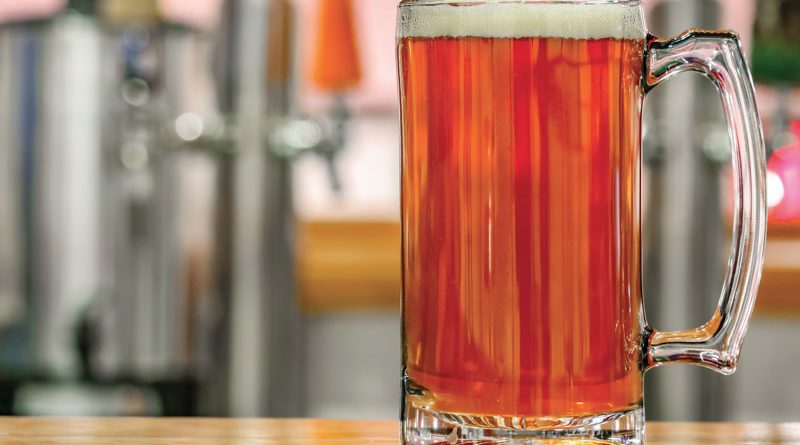The Brewing Process Is under Control
The multisensor system developed by Endress+Hauser enables seamless and comfortable control of the brewing process, at any time and from any location. And manual samples drawn on site are just a distant memory
Beer brewing is a complex matter, and many parameters have to be continually monitored. Small- and medium-sized breweries in particular often still rely on manual samples drawn on site – a time-consuming and not always reliable method.
In order to determine the residual extract, for instance, the brewery has to measure the density of each fermentation tank once or twice a day with the help of a beer spindle or a refractometer, which takes around 5 to 10 minutes for each tank. “This method supplies only selective results, however” says Julia Rosenheim, the responsible product manager at Endress+Hauser Level+Pressure. “If brewers measure at around 6 pm for instance, they could possibly miss the end of the fermentation process during the night.”

Directly calling up fermentation parameters
Help is available through the QWX43, a multisensor system from Endress+Hauser. It enables seamless and comfortable control of the process, at any time and from any location.
The brewer is now able to directly call up fermentation parameters such as density, viscosity, fermentation grade, residual extract, original extract or alcohol content with a mobile device or a computer with Internet access, all with a high degree of precision. “This would not be possible with a simple density measurement since the beer extract is a multi-component medium” explains Julia Rosenheim. QWX43 simultaneously measures four physical parameters: density, viscosity, acoustic velocity and temperature.
A combination of a piezo-activated tuning fork and sensors
To do that, the engineers combined a piezo-activated tuning fork and several temperature sensors within a hygienic, encapsulated stainless steel housing.
The tuning fork sensor is used for two different measurements. The density and viscosity of the medium are measured through the oscillation frequency and vibration absorption, as well as the attenuation behavior of the low-frequency activated fork prongs.
An additional ultrasound runtime measurement between the prongs of a fork is used to measure more complex parameters such as alcohol content. The piezo tuning fork features a special rounded design that reduces the formation of gas bubbles and build-up on the surface of the sensor, and increases the stability and reliability of the measurement. The temperature sensors – strategically and cleverly placed on the tuning fork and in the ultrasound tube – can detect even the smallest temperature grades, thus enabling precise compensation of temperature-related measurement deviations.
Thanks to the measurement system’s high degree of precision and resolution, the brewer can also carry out more complex analyses such as comparisons to already-completed fermentation processes or fermentation models. The QWX43 furthermore opens up other application possibilities beyond fermentation, such as continuous analysis of the malt and dextrin content of the mash during saccharification, or measuring the concentration of the original extract when it is boiled. With this process the brewery can completely forego manual sampling.

Monitoring parameters around-the-clock
Thanks to the inline measurement, they no longer have to deal with sampling tubes at the tank, and can instead monitor the desired measurement values on a smartphone from any location with internet access.
The associated web app can graphically represent the four major parameters at the same time and compare them with historical data. More complex process analyses can be carried out via a web interface on a PC. In order to react when specific thresholds are reached, brewers can set corresponding alarms, after which they receive a notification. The inline measurement system can be easily adapted to various tank systems and requires neither adjusting nor calibration, plus the fully hygienic sensor design makes cleaning extremely simple. Data can be transmitted to the cloud via a WiFi connection, and mobile phone connectivity is possible as well. The data is available in a secure cloud environment where it can be analyzed.

